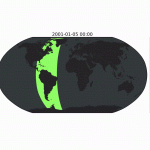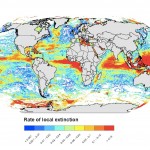The study “Biogeochemical regions of the Mediterranean Sea: an objective multidimensional and multivariate environmental approach” was recently published in Progress in Oceanography with Nereus Fellow Gabriel Reygondeau (UBC) as the lead author. In the paper, a biogeochemical/ecological spatial framework was defined for ecosystems of the Mediterranean Sea. The authors show that the vertical dimension is crucial in such analysis since surface ecosystems cannot be extended to the bottom, as most studies assume, as the surface is driven by different environmental variables. This highlights the need for conservation management that accounts for the differences in zoning with depth at a regional scale.

Image: Mediterranean Sea Region 1569 by Stuart Rankin, CC BY-NC 2.0.
Abstract
When dividing the ocean, the aim is generally to summarise a complex system into a representative number of units, each representing a specific environment, a biological community or a socio-economical specificity. Recently, several geographical partitions of the global ocean have been proposed using statistical approaches applied to remote sensing or observations gathered during oceanographic cruises. Such geographical frameworks defined at a macroscale appear hardly applicable to characterise the biogeochemical features of semi-enclosed seas that are driven by smaller-scale chemical and physical processes. Following the Longhurst’s biogeochemical partitioning of the pelagic realm, this study investigates the environmental divisions of the Mediterranean Sea using a large set of environmental parameters. These parameters were informed in the horizontal and the vertical dimensions to provide a 3D spatial framework for environmental management (12 regions found for the epipelagic, 12 for the mesopelagic, 13 for the bathypelagic and 26 for the seafloor). We show that: (1) the contribution of the longitudinal environmental gradient to the biogeochemical partitions decreases with depth; (2) the partition of the surface layer cannot be extrapolated to other vertical layers as the partition is driven by a different set of environmental variables. This new partitioning of the Mediterranean Sea has strong implications for conservation as it highlights that management must account for the differences in zoning with depth at a regional scale.








